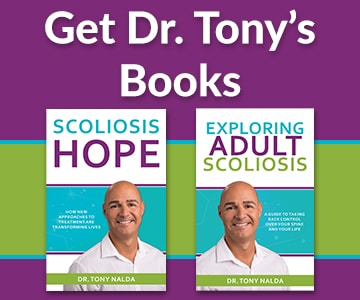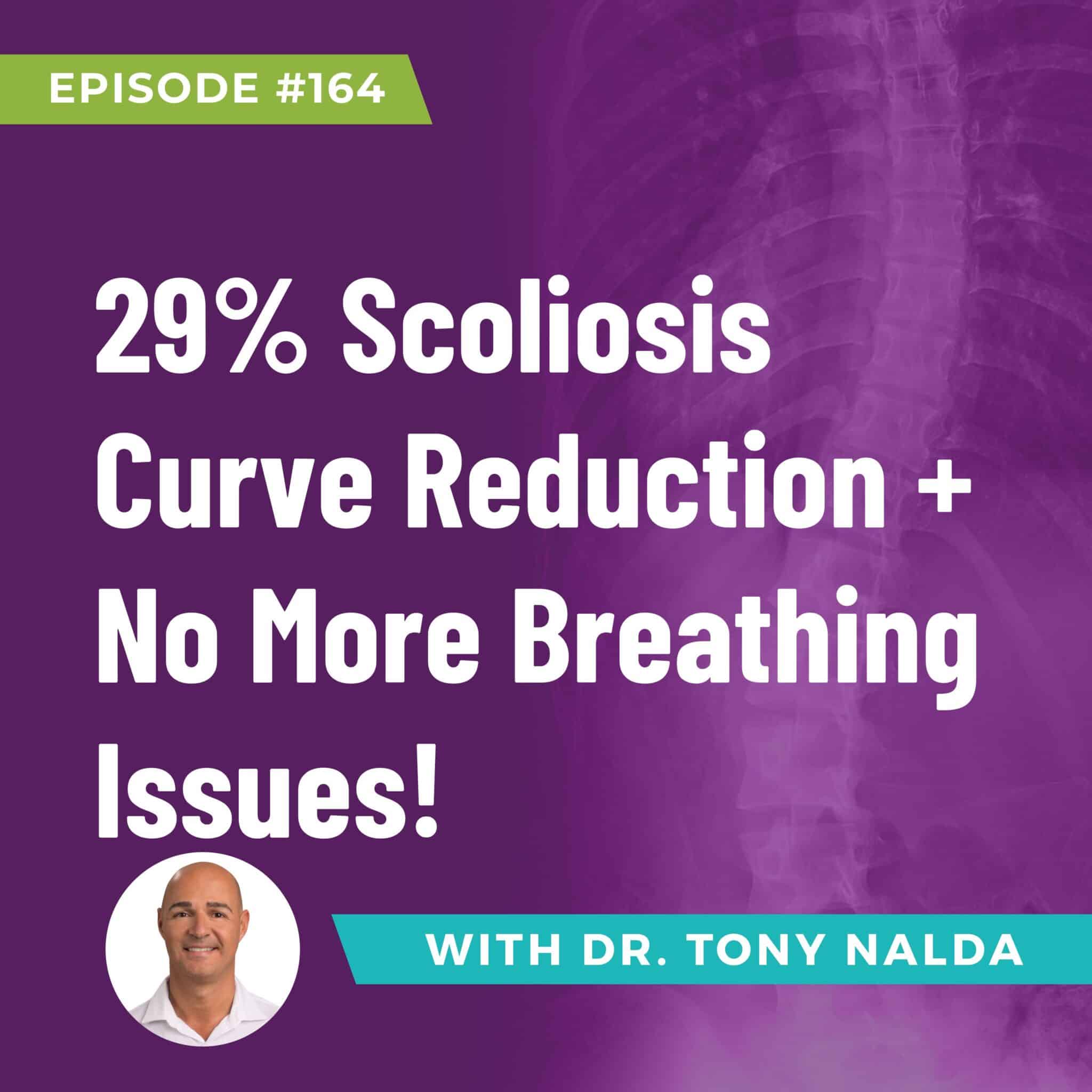Episode 164: 29% Scoliosis Curve Reduction + No More Breathing Issues!
Table of Contents
🎙️ Scoliosis Treatment with Dr. Tony Nalda
Episode Title: Can Scoliosis Impact Your Breathing?
Podcast Summary:
In this powerful episode of Scoliosis Treatment with Dr. Tony Nalda, we hear from Christy, an 18-year-old who was first diagnosed with scoliosis as a teenager in Venezuela. She shares her journey of discovering how her spinal curvature began affecting her breathing, posture, and quality of life — and how a specialized, non-surgical treatment plan brought her relief and renewed hope.
Dr. Nalda also provides expert commentary on a frequently asked question: Can scoliosis affect breathing and lung function? His answer may surprise you.
🎧 Episode Highlights
Christy’s Story: A Breath of Struggle
-
Diagnosed with scoliosis at age 16, Christy initially noticed a difference when she exerted herself physically — running or exercising made it harder to breathe.
-
As she continued to grow, the discomfort and pain worsened, particularly in her lungs. She later learned that one of her spinal curves was pressing on her lungs, restricting normal respiration.
Dr. Nalda’s Insight: The Curve vs. The Stiffness
-
Contrary to popular belief, it's not necessarily the size of a scoliosis curve that affects breathing — it’s the stiffness of the spine.
-
A small curve can significantly impair breathing if it creates enough rigidity. Conversely, a larger curve might not impact lung capacity at all in certain individuals.
-
“During breathing, your spine should flex. When scoliosis makes it stiffer, that’s when breathing becomes restricted,” explains Dr. Nalda.
📉 From 35° to 25° in Just 9 Days
Christy’s treatment led to impressive results:
-
Her worst curve reduced by 10° (from 35° to 25°), and all four of her curves improved significantly.
-
Her shoulders became visibly more balanced in just over a week of intensive therapy.
-
"I feel happy… I’m doing something better for my body," Christy said with a smile.
Dr. Nalda underscores the significance of this kind of progress:
“Going from 34 degrees to 24 degrees is a huge deal. That’s the same curve change that often separates no treatment from surgery in traditional care models.”
💡 Key Takeaways
-
Scoliosis can restrict breathing — but not necessarily because of the curve’s size. Spinal stiffness plays a larger role.
-
Each scoliosis case is unique. What affects one person dramatically might not affect another.
-
Early, intensive, and specialized treatment can lead to measurable curve reduction and improved quality of life, even in just a short time.
🎁 Free Resource for Patients and Families
Understanding scoliosis is the first step toward taking control of it.
📘 Download our free guide: How to Effectively Treat Scoliosis
This guide offers up-to-date, accurate information about non-surgical treatment options for scoliosis.
🌐 Learn More
For personalized scoliosis treatment and evaluations, visit:
🔗 ScoliosisReductionCenter.com
MB01DQ85I03BT5F
Podcast: Play in new window | Download
Subscribe: RSS
Dr. Tony Nalda
DOCTOR OF CHIROPRACTIC
After receiving an undergraduate degree in psychology and his Doctorate of Chiropractic from Life University, Dr. Nalda settled in Celebration, Florida and proceeded to build one of Central Florida’s most successful chiropractic clinics.
His experience with patients suffering from scoliosis, and the confusion and frustration they faced, led him to seek a specialty in scoliosis care. In 2006 he completed his Intensive Care Certification from CLEAR Institute, a leading scoliosis educational and certification center.
About Dr. Tony Nalda
 Ready to explore scoliosis treatment? Contact Us Now
Ready to explore scoliosis treatment? Contact Us Now








